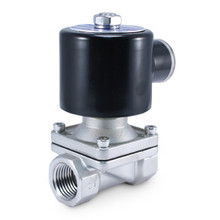Mike Pass
Supporter
Just swapping over to teflon lined SS braided fuel hose. The end fittings are different and use a ferrule but they then screw onto the old -6 AN fittings. I don't know if the ANODISED aluminium fittings are ethanol proof. I opened up some old hose after use with E5 and it was not a pretty sight.
I have also done a trial of ethanol removal. I pumped out the tanks and put 10 litres in a plastic container with 1 litre of coloured water (blue food colouring). Shook thoroughly and left overnight to settle. The water forms a layer at the bottom which I then drained out. The ethanol dissolves preferentially in the water thus removing it from the petrol/gas. The result is seen in the pic attached.
The "de-ethanoled fuel" then went back in. This may be a good way to remove the ethanol for longer term storage. Remember to run some through the carb to eliminate it from the float bowls. If out and about you can fill up with E5 as normal but pump out any left and treat to remove the ethanol to prevent damage.One actual benefit of ethanol in the fuel is that it will pick up any water lurking in the tank.
In the UK we are soon to get E10 (10%) ethanol in all lower octane fuels and some higher octane fuels. Most fuels will be at least E5. The pumps will be marked E5 or E10. As far as I have been able to find out the only ethanol free fuel is Esso Supreme 97 which is ethanol free in most UK regions except Devon and Cornwall. Teeside and Scotland and some parts of Northern England.The pump may still be marked E5 but it is ethanol free and there seems to be no plan to add it to this fuel. I will be buying some and testing it by the above method.
Cheers
Mike
I have also done a trial of ethanol removal. I pumped out the tanks and put 10 litres in a plastic container with 1 litre of coloured water (blue food colouring). Shook thoroughly and left overnight to settle. The water forms a layer at the bottom which I then drained out. The ethanol dissolves preferentially in the water thus removing it from the petrol/gas. The result is seen in the pic attached.
The "de-ethanoled fuel" then went back in. This may be a good way to remove the ethanol for longer term storage. Remember to run some through the carb to eliminate it from the float bowls. If out and about you can fill up with E5 as normal but pump out any left and treat to remove the ethanol to prevent damage.One actual benefit of ethanol in the fuel is that it will pick up any water lurking in the tank.
In the UK we are soon to get E10 (10%) ethanol in all lower octane fuels and some higher octane fuels. Most fuels will be at least E5. The pumps will be marked E5 or E10. As far as I have been able to find out the only ethanol free fuel is Esso Supreme 97 which is ethanol free in most UK regions except Devon and Cornwall. Teeside and Scotland and some parts of Northern England.The pump may still be marked E5 but it is ethanol free and there seems to be no plan to add it to this fuel. I will be buying some and testing it by the above method.
Cheers
Mike



